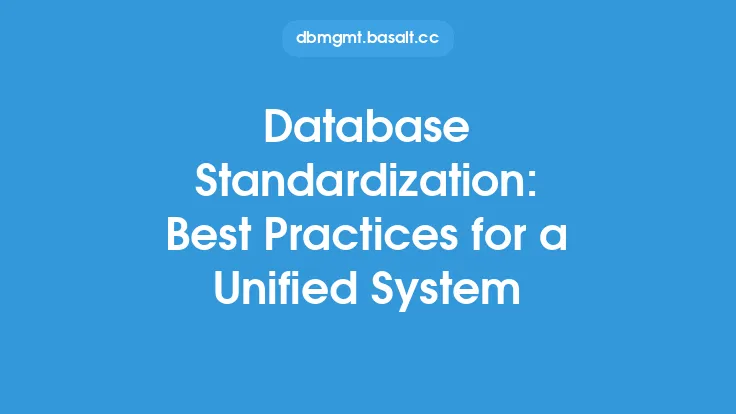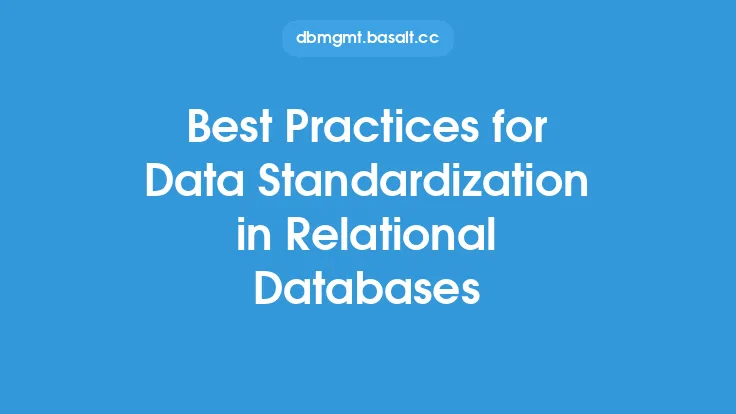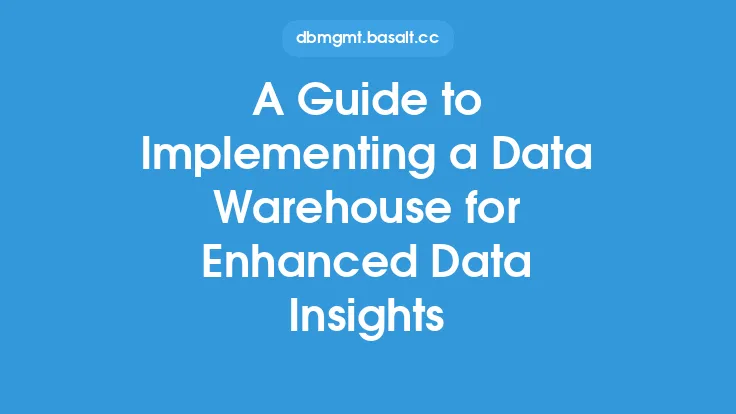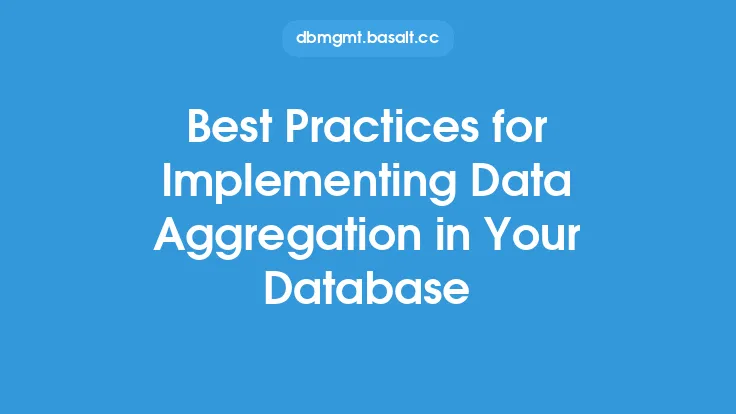Implementing data standardization best practices is a crucial step in ensuring the quality, consistency, and reliability of data within an organization. Data standardization refers to the process of establishing a common format, structure, and definition for data elements across different systems, applications, and databases. This process helps to eliminate data inconsistencies, reduces errors, and improves data integration, sharing, and analysis. In this article, we will delve into the key aspects of implementing data standardization best practices, including the benefits, challenges, and technical considerations.
Introduction to Data Standardization
Data standardization involves creating a set of rules, guidelines, and protocols for collecting, storing, and managing data. This includes defining data formats, data types, and data structures, as well as establishing standards for data naming, labeling, and documentation. The goal of data standardization is to ensure that data is consistent, accurate, and reliable, and that it can be easily shared, integrated, and analyzed across different systems and applications. Data standardization is essential for organizations that rely on data-driven decision-making, as it helps to reduce errors, improve data quality, and increase the efficiency of data analysis and reporting.
Benefits of Data Standardization
The benefits of data standardization are numerous and well-documented. Some of the key advantages of implementing data standardization best practices include:
- Improved data quality: Data standardization helps to reduce errors, inconsistencies, and inaccuracies in data, resulting in higher-quality data that is more reliable and trustworthy.
- Increased efficiency: Standardized data can be easily shared, integrated, and analyzed across different systems and applications, reducing the time and effort required for data analysis and reporting.
- Enhanced data sharing and collaboration: Data standardization facilitates the sharing and collaboration of data across different departments, teams, and organizations, promoting a culture of data-driven decision-making.
- Better decision-making: Standardized data provides a consistent and reliable basis for decision-making, enabling organizations to make informed, data-driven decisions that drive business success.
- Reduced costs: Data standardization can help to reduce costs associated with data management, data integration, and data analysis, as well as minimize the risks associated with data errors and inconsistencies.
Challenges of Data Standardization
Despite the benefits of data standardization, implementing best practices can be challenging. Some of the common challenges organizations face when implementing data standardization include:
- Lack of standardization: Many organizations lack standardized data formats, structures, and definitions, making it difficult to integrate and analyze data from different sources.
- Data complexity: Large, complex datasets can be difficult to standardize, particularly if they contain multiple data types, formats, and structures.
- Legacy systems: Older systems and applications may not support standardized data formats, making it challenging to integrate and analyze data from these sources.
- Cultural and organizational barriers: Data standardization may require significant cultural and organizational changes, including changes to business processes, policies, and procedures.
- Technical limitations: Technical limitations, such as data storage and processing capacity, can limit the ability to standardize and analyze large datasets.
Technical Considerations for Data Standardization
Implementing data standardization best practices requires careful consideration of technical factors, including:
- Data formats: Standardized data formats, such as CSV, JSON, and XML, can facilitate data sharing and integration.
- Data types: Standardized data types, such as integers, strings, and dates, can help to ensure data consistency and accuracy.
- Data structures: Standardized data structures, such as relational databases and data warehouses, can provide a consistent and reliable basis for data storage and analysis.
- Data governance: Data governance policies and procedures can help to ensure that data is managed, stored, and analyzed in a consistent and reliable manner.
- Data quality: Data quality checks and validation rules can help to ensure that data is accurate, complete, and consistent.
Best Practices for Implementing Data Standardization
To implement data standardization best practices, organizations should follow these steps:
- Establish a data governance framework: Develop a data governance framework that outlines policies, procedures, and standards for data management, storage, and analysis.
- Define data standards: Define standardized data formats, structures, and definitions for data elements across different systems and applications.
- Implement data quality checks: Implement data quality checks and validation rules to ensure that data is accurate, complete, and consistent.
- Use standardized data formats: Use standardized data formats, such as CSV, JSON, and XML, to facilitate data sharing and integration.
- Provide training and support: Provide training and support to employees to ensure that they understand and can implement data standardization best practices.
Tools and Technologies for Data Standardization
A range of tools and technologies can support data standardization, including:
- Data governance platforms: Data governance platforms, such as Collibra and Informatica, can help to establish and manage data governance policies and procedures.
- Data quality tools: Data quality tools, such as Trifacta and Talend, can help to implement data quality checks and validation rules.
- Data integration tools: Data integration tools, such as Apache NiFi and Microsoft SQL Server Integration Services, can help to integrate and analyze data from different sources.
- Data storage solutions: Data storage solutions, such as relational databases and data warehouses, can provide a consistent and reliable basis for data storage and analysis.
Conclusion
Implementing data standardization best practices is essential for organizations that rely on data-driven decision-making. By establishing a data governance framework, defining data standards, implementing data quality checks, and using standardized data formats, organizations can improve data quality, increase efficiency, and enhance data sharing and collaboration. While challenges and technical considerations must be addressed, the benefits of data standardization make it a critical component of any data management strategy. By following best practices and leveraging tools and technologies, organizations can unlock the full potential of their data and drive business success.





